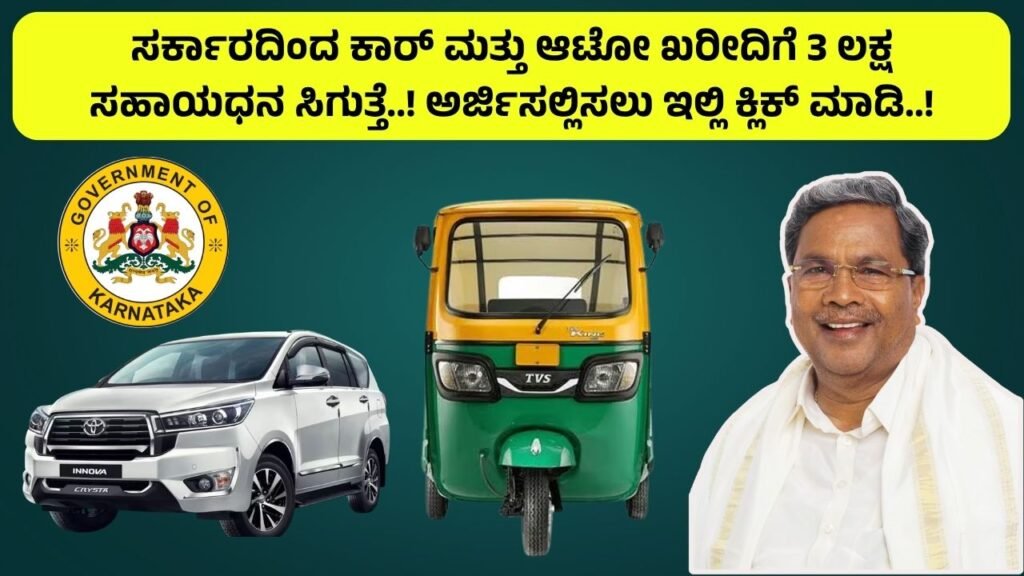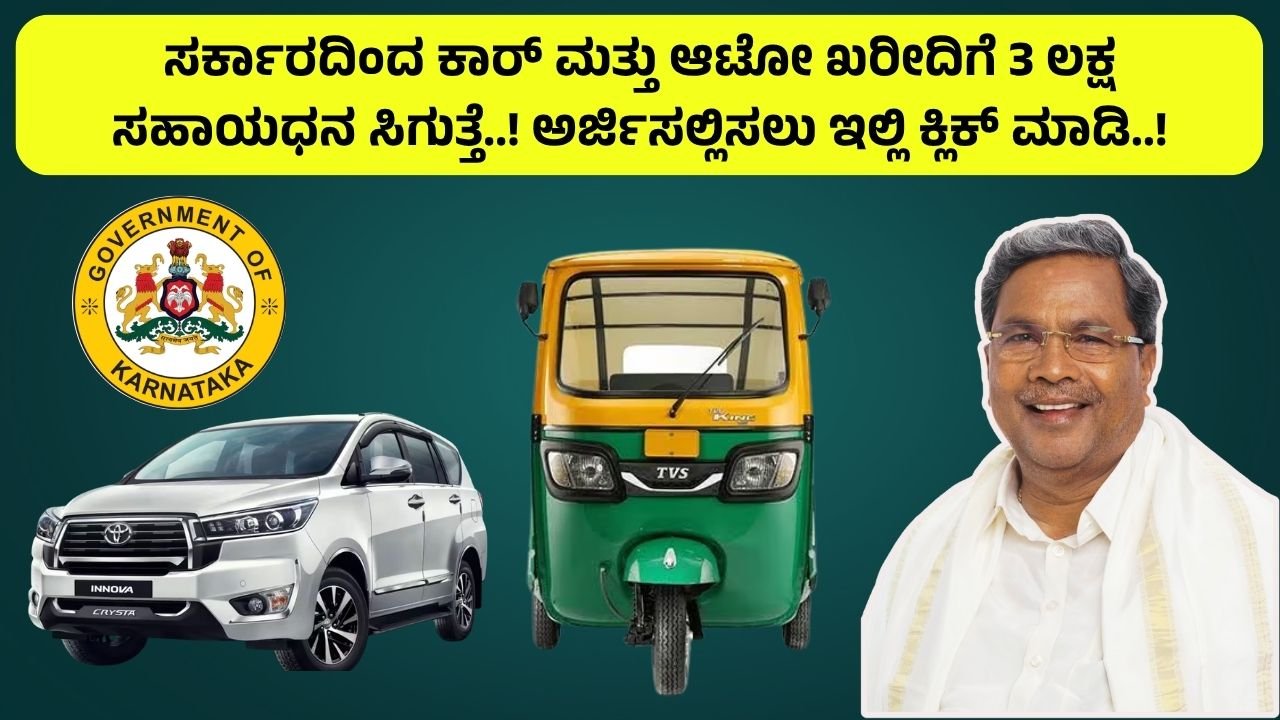Introduction:
The Swavalambi Sarathi Yojane, also called Karnataka Vehicle Purchase Subsidy Scheme, is a flagship self‑employment scheme launched by the Government of Karnataka in the 2023‑24 budget under Chief Minister Siddaramaiah. It aims to empower unemployed youth from socially and economically disadvantaged sections—Scheduled Castes (SC), Scheduled Tribes (ST), backward classes (OBC), minority communities, and other reserved communities—to become self‑reliant through purchase of commercial vehicles

1. Objectives and Purpose
- Promote self‑employment among unemployed youth in rural and urban Karnataka.
- Provide financial support for purchasing vehicles such as passenger auto‑rickshaws, taxis, and goods transport vehicles.
- Enable economically weaker communities to establish transport‑based livelihoods quickly and sustainably
2. Eligibility Criteria
- Must be a permanent resident of Karnataka.
- Applicant’s age must be between 21 and 45 years (some reports state 18 to 55, but most official sources indicate 21–45 based on evening boards)
- Annual family income limit: ≤ ₹98,000 for rural areas, ≤ ₹1,20,000 for urban areas (some sources mention ₹4,50,000—note possible variation across implementing bodies)
- Applicant must possess a valid light motor vehicle (LMV) driving license.
- No member of the applicant’s family should have benefited from any major scheme by KMDCL or state corporations in the last five years, except the Arivu Scheme
- Only one member per family eligible; women and transgenders are given preference where applicable
3. Subsidy Benefits and Financial Support
- The scheme offers subsidy on vehicle cost, with remaining amount financed through a bank loan arranged in collaboration with nationalized or scheduled banks via implementing development corporations (KMDCL or caste‑based boards)
- Subsidy rates:
- SC/ST applicants: up to 75% of vehicle cost.
- Minority and OBC applicants: up to 50% of vehicle cost.
- For passenger auto‑rickshaws: fixed subsidy of ₹75,000.
- In some caste board‑run versions, up to 70% subsidy on goods vehicle, tractor, or transport unit cost
4. Documents Required
Applicants must upload the following via the Seva Sindhu / Suvidha Portal or visit citizen service centres:
- Aadhaar card (proof of residency)
- Caste or minority certificate issued by competent authority
- Income certificate
- Valid LMV driving license copy
- Bank passbook (Aadhaar‑linked bank account)
- Vehicle quotation/price estimate
- Self‑declaration affidavit (no prior support used, won’t resell vehicle, unemployed, etc.)
- Passport‑size photograph and mobile number for OTP verification
5. Application Process
- Visit the official KMDCL portal or relevant corporation’s site and register using mobile number and Aadhaar OTP.
- Select the Swavalambi Sarathi Yojane under the list of schemes.
- Complete application form with personal, vehicle, and bank details. Upload required documents and confirm submission.
- Obtain application acknowledgment or print the submitted summary.
- A selection committee at district level (headed by local officials, block/district-level nominees) shortlists eligible candidates for subsidy recommendation to the bank
6. Loan Sanction and Subsidy Disbursement
- Banks process loan for the remaining vehicle cost after subsidy.
- Subsidy is released via Direct Benefit Transfer (DBT) to the applicant’s Aadhaar‑linked bank account once loan is sanctioned and requisite post‑purchase documents (Registration Certificate, road tax receipt, insurance receipt) are verified by district officials and uploaded in centralized system (e.g. VISSWAS software)
- Vehicle must be registered under Yellow Board (for taxis/rickshaws) and must not be sold, transferred, or converted to private (White Board) use during loan tenure
7. Salient Features & Safeguards
- Encourages transport‑vehicular entrepreneurship for low‑income youth.
- Preference to women, transgenders, and marginalized groups.
- Enforces anti‑fraud and retention policies—no prior beneficiaries, vehicle not transferable until loan ends.
- Ensures transparency through online portal, OTP/Aadhaar linkage, and DBT system.
- Implemented through multiple development corporations (minorities, caste‑based boards), ensuring community‑level oversight
8. Impact & Outlook
Since its launch in 2023‑24, the Swavalambi Sarathi scheme has assisted a significant number of youth to purchase vehicles for livelihood generation. With subsidy range from ₹75,000 to ₹4 lakh, it reduces upfront investment burden. The requirement of bank financing also instills financial discipline and credit access. The preference for first‑time applicants and women/transgender ensures equitable distribution.
In the financial year 2025‑26, applications opened in June 2025 and final dates varied by corporation (from late June to early July) depending on community board jurisdiction . Implementation continues with updated rounds of intake across Seva Sindhu portal, GRAM‑One, Bengaluru‑One citizen centres.
Conclusion
the Swavalambi Sarathi Yojane is a transformative effort by Karnataka Government. By offering substantial subsidies, accessible loans, and streamlined digital application, it promotes inclusive growth, dignified self‑employment, and economic uplift for marginalized youth. The scheme not only reduces financial barriers but also fosters sustainable mobility-based livelihoods.
